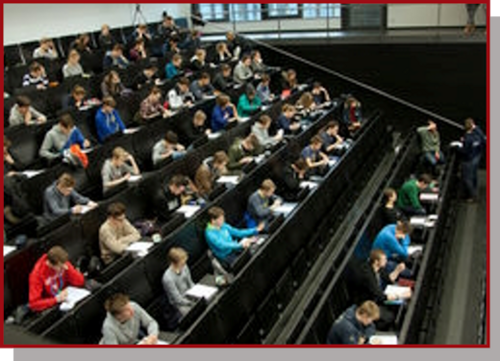Dr. Hossam Elgabarty
University of Paderborn
will speak on the topic
THz dynamics and polarization of water and aqueous ionic solutions
Abstract:
In non-magnetic dielectrics, optical polarization is the only material quantity that enters into the Maxwell equations, and thus provides the complete information necessary for the calculation of any optical measurement. A long-standing goal has been to relate the macroscopic response to microscopic properties (reductionism ↔ emergence). Here, although the quantum chemical calculation of molecular (hyper)polarizabilities in the gas phase is very well-developed, a major challenge is to relate this microscopic molecular response in molecular condensed phases to the macroscopic electric susceptibilities that are directly accessible to experiment, and to relate the underlying molecular dynamics to the observed spectroscopic line shape. This is especially challenging for multi-dimensional and low-frequency spectroscopies in the THz and far-IR regimes, with low-energy scales, collective molecular dynamics, and non-linearities, requiring prohibitively excessive sampling in simulations. Here, employ non-equilibrium molecular dynamics (ab initio MD, non-polarizable-, and polarizable-force field MD) to simulate the effect of a single-cycle THz excitation on water and on aqueous solutions of strong electrolytes. This synergistic combination of several simulation techniques opens up several possibilities that are not accessible with any single method. Using the classical multipolar expansion of a polarizable molecular charge distribution, we calculate self-consistently the local field at each water molecule and subsequently the bulk polarizability of the system, enabling us to follow excitation and relaxation processes. The excitation-induced polarizability anisotropy (THz Kerr effect) is then compared both to ab initio benchmarks and to the experimental results obtained from a THz-optical-Raman pulse sequence. THz relaxation dynamics reveals the underlying energy fluxes and their relation to the collision-induced contribution to bulk polarization. We find a consistent trend where most of the THz field energy is initially dumped into molecular rotations, which in turn ultrafast couples to molecular translational kinetic energy, with the re-equilibration of the latter mirroring the decay of the THz pulse-induced birefringence. Electrolyte ions modify this behavior in revealing manner. We also examine the ion-induced changes in hydrogen bond strengths in the solvation shells, shedding new light on some of the long-standing debates about the Hofmeister series.
Interested parties are cordially invited
Professor Dr. Kühn

